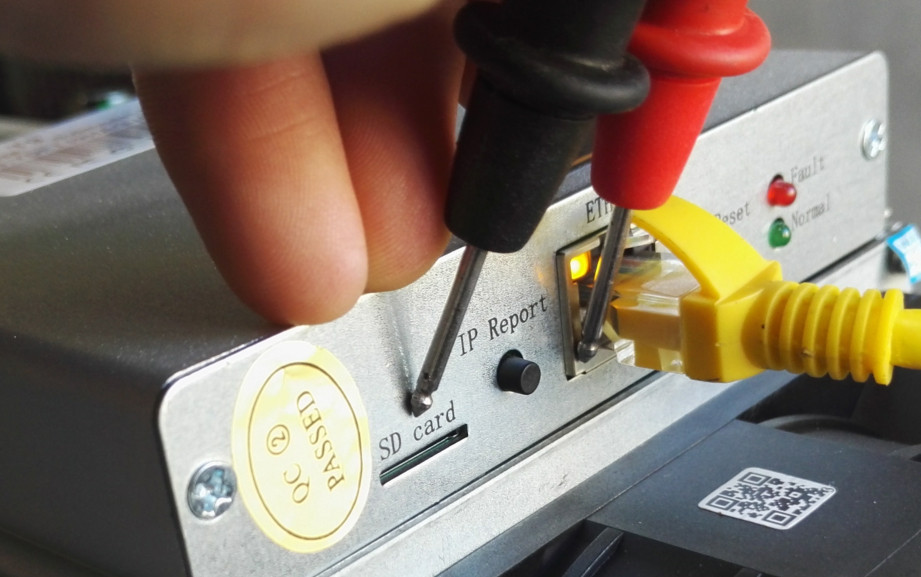


Part of the miner is not grounded correctly, causing the shell to be charged, and it is easy to damage the control board and the hash board when the miner is operated with electricity. There is no problem if the measured voltage is below 0.3V. It is also possible to control it within 1V, but it will damage the miner if it exceeds 1V.
Suggestion: For grounding, find a professional electrician to plan a specific grounding method.
The detection method is as follows:
Method one:
Adjust the gear of the fluke 15b+ multimeter to 220V AC voltage. When the miner is running, touch the test lead of the multimeter to the exposed metal part of the miner shell and the shelf to check whether there is voltage. If there is leakage, it means that the grounding is not done well, and it needs to be dealt with as soon as possible; If there is no voltage, it means that the grounding is standard, and there is no leakage. (This method requires that the shell of the miner is not in contact with the metal of the shelf)
Method Two:
Adjust the gear position of the multimeter to 220V AC voltage. When the miner is running, touch the test pen of the multimeter to the metal cover of the miner network port and the miner shell to check whether there is voltage; If there is voltage, it means that the grounding is not done well, and it needs to be dealt with as soon as possible; If there is no voltage, it means that the grounding is standard and there is no leakage. (This method requires that the metal cover of the miner's network port is not in contact with the miner's control board)

Dear Customers,
Hello, April 4, 5 and 6, 2025 (GMT+8) are the traditional Chinese festivals - Qingming Festival. Our company will suspend shipments during these 3 days and resume shipments on April 7 (GMT+8). We are deeply sorry for the inconvenience. Thank you for your understanding and support.
Best wishes,
ZEUS MINING CO., LTD